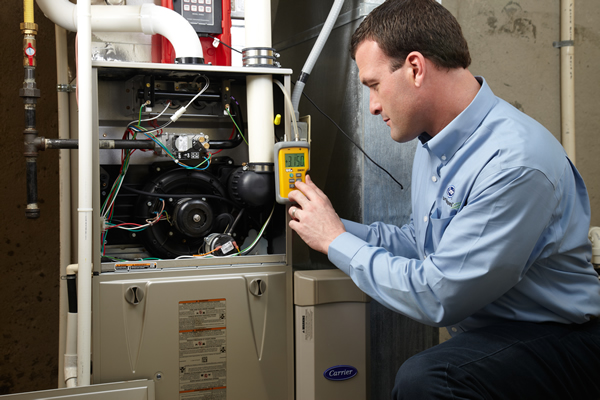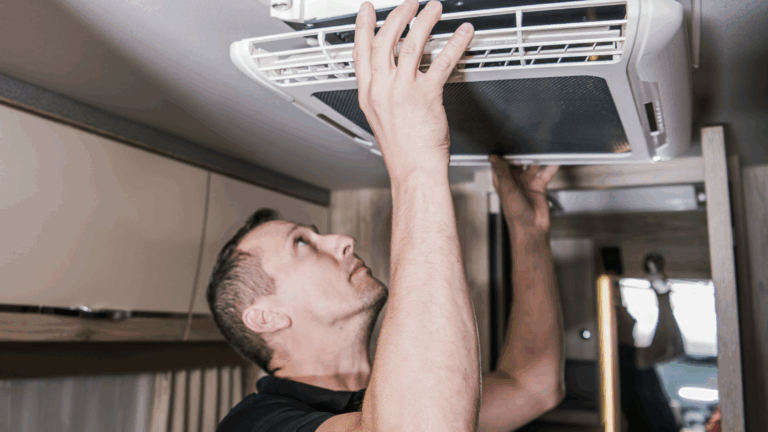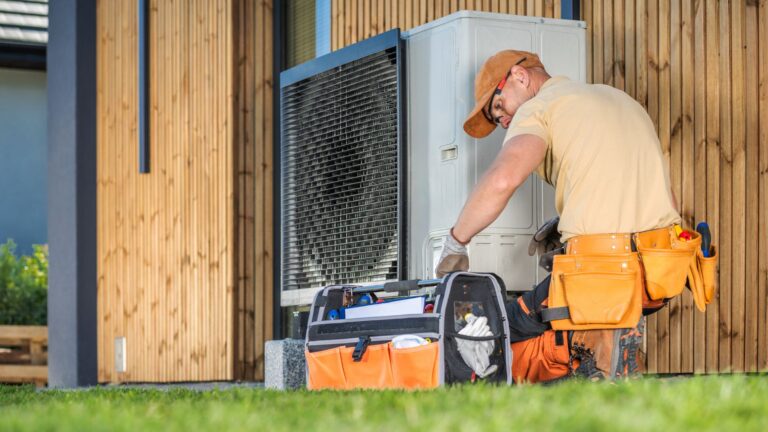When the temperatures start to dip, your furnace quickly becomes the most important appliance in your home. A well-maintained furnace doesn’t just keep you warm, it keeps your energy bills lower, your indoor air quality cleaner, and your family safer from risks like gas leaks or carbon monoxide exposure.
But here’s the truth: most homeowners don’t give their furnace the attention it deserves until something goes wrong. And by then, you may already be facing costly repairs.
The good news? With the right furnace maintenance tips, you can avoid emergencies, improve efficiency, and extend the life of your furnace. In fact, the U.S. Department of Energy notes that regular HVAC maintenance can reduce energy use by up to 15% while preventing unexpected breakdowns.
This guide will walk you through everything you need to know about furnace maintenance, from simple DIY steps you can do yourself to professional tasks best left to a qualified HVAC technician.
Why Furnace Maintenance Matters?
Your furnace is the backbone of your heating system, but it’s also connected to your larger HVAC system, which may include a central air conditioner or a heat pump. That means neglecting furnace care doesn’t just affect heating, it impacts your entire home comfort system.
When furnaces don’t get routine maintenance, several issues can crop up:
- Dirty filters restrict airflow, forcing the blower to work harder and driving up energy bills.
- A cracked heat exchanger can leak dangerous carbon monoxide into your home.
- A worn blower motor can fail in the middle of the heating season, leaving you without heat.
- Dust and debris buildup lowers indoor air quality and can aggravate allergies or asthma.

Research backs this up. The Environmental Protection Agency (EPA) highlights that poor HVAC maintenance contributes to poor indoor air and higher household energy consumption. By contrast, preventative maintenance ensures your system runs efficiently and safely.
How Often Should You Service Your Furnace?
If you’re wondering how often you should be scheduling furnace service, the short answer is: once a year. Most HVAC professionals recommend an annual furnace maintenance appointment to catch problems early and keep your system running smoothly.
In addition:
- Change the furnace filter every 1–3 months. A dirty filter can reduce efficiency by up to 15%, according to ENERGY STAR.
- Schedule your furnace tune-up before the heating season begins, usually in early fall.
- If you have pets, allergies, or live in a dusty area, you may need to inspect and replace your air filter more often.
DIY Furnace Maintenance Tips
You don’t need to be a technician to perform some basic maintenance steps that keep your furnace in shape. Here are some practical, safe tasks homeowners can do themselves:
1. Replace or Clean the Air Filter
Think of your air filter as the lungs of your heating system. A clogged filter makes your furnace work harder, shortens its lifespan, and reduces indoor air quality.
- Replace disposable filters every 1–3 months.
- Wash reusable filters regularly.
- Always check manufacturer instructions for the right size and type of filter.
2. Inspect Vents and Ductwork
Your air ducts and vents move warm air throughout the house. Blocked or dirty vents reduce airflow and make rooms heat unevenly.
- Vacuum vents regularly.
- Keep furniture, rugs, or drapes from blocking airflow.
- If you notice excessive dust or musty odors, consider a professional duct cleaning.
3. Keep the Furnace Area Clear
Clutter near your furnace can create fire hazards and block access during service.
- Store flammable items (like paint or cleaning chemicals) away from your furnace.
- Sweep and vacuum around the unit to prevent dust buildup.
4. Test the Thermostat
Your thermostat controls when your furnace cycles on and off. If it’s malfunctioning, your heating won’t feel consistent.
- Replace old thermostats with programmable or smart models for efficient heating.
- Test settings to ensure the furnace responds correctly.
5. Check the Pilot Light and Burner
In gas furnaces, the pilot light and burner are crucial for safe combustion.
- A healthy pilot light should burn blue. If it’s yellow or flickering, call an HVAC technician.
- Visually inspect burners for dust or corrosion.
6. Flush the Condensate Line
Modern furnaces create moisture, which drains through a condensate line. Clogs here can cause leaks.
- Check for standing water around your furnace.
- If the line looks clogged, carefully flush it with vinegar and water.
7. Inspect Safety Devices
Carbon monoxide detectors are your first line of defense against leaks from a cracked heat exchanger or faulty combustion.
- Test alarms monthly.
- Replace batteries every year.
Professional Furnace Maintenance Tasks
While DIY tasks are great, some jobs should always be handled by a qualified HVAC technician. During an annual furnace tune-up, a technician will:
- Inspect your furnace for cracks, wear, and gas leaks.
- Test and clean the heat exchanger, burners, and blower motor and fan.
- Check and tighten electrical connections.
- Calibrate the thermostat.
- Lubricate moving parts to reduce wear.
- Inspect the condensate drain and ensure proper flow.
- Verify safe combustion and test for carbon monoxide leaks.
This thorough process ensures your system is running efficiently and helps you avoid costly repairs down the road.
Furnace Maintenance Checklist
Here’s a quick maintenance checklist you can use to keep your furnace in top shape:
- Change air filter every 1–3 months.
- Inspect and vacuum vents and air ducts.
- Keep area around furnace clear.
- Test thermostat for accuracy.
- Inspect pilot light, burners, and sensor.
- Flush condensate line if needed.
- Test carbon monoxide detectors.
- Schedule annual furnace maintenance with a local HVAC professional.
Safety Considerations
Safety should always come first. Before starting any maintenance tasks, make sure to:
- Turn off the furnace power supply.
- Shut off the gas before touching any gas-related components.
- Never attempt repairs on the heat exchanger, electrical connections, or gas lines, leave those to a professional HVAC technician.
- Install and maintain carbon monoxide detectors on every floor of your home.
Cost of Furnace Maintenance vs. Repairs
| Service / Repair Type | Average Cost Range | Notes |
| Annual Furnace Tune-Up | $80 – $150 | Preventative maintenance that improves efficiency and prevents breakdowns. |
| Blower Motor Replacement | $400 – $700 | Common repair caused by strain from dirty filters or poor airflow. |
| Cracked Heat Exchanger | $1,500 – $3,000 | Serious issue; can leak carbon monoxide and often requires full replacement. |
| Energy Bill Savings | 5% – 15% annually | Regular maintenance reduces energy use, lowering monthly heating costs. |
Furnace Maintenance and Indoor Air Quality
Your furnace plays a bigger role in indoor air quality than most homeowners realize.
- A clean furnace filter traps dust, pollen, and pet dander.
- Dirty filters and ducts circulate pollutants throughout your home.
- Properly maintained systems keep indoor air fresh and breathable.
This is especially important for households with kids, elderly family members, or anyone with respiratory issues.
Furnace Maintenance and Overall HVAC System
Keeping your furnace in good shape doesn’t just affect heating, it also helps your air conditioner and heat pump.
Since these systems often share ductwork and blowers, a poorly maintained furnace can strain your air conditioning equipment. Regular HVAC maintenance keeps your entire system running efficiently year-round.
Common Myths About Furnace Maintenance
Let’s bust a few myths:
- “You only need to change the filter once a year.” False. Change it every 1–3 months.
- “Furnaces don’t need maintenance unless they break.” Skipping maintenance shortens lifespan and raises repair costs.
- “All filters are the same.” Not true, filters have different ratings for efficiency and airflow.
When to Call a Professional Technician
Some problems require immediate professional help. Call a qualified HVAC professional if you notice:
- Strange banging or rattling noises.
- Weak or uneven airflow.
- Short cycling (furnace turns on and off too quickly).
- Unexplained increase in energy bills.
- Gas smells or suspected carbon monoxide leaks.
A local HVAC technician can diagnose these issues safely and ensure your system is operating correctly.
Conclusion
Your furnace works hard every winter to keep you warm, but it can’t do its job without proper care. With a mix of DIY maintenance tips and regular checkups from an HVAC professional, you can:
- Keep your furnace running smoothly.
- Improve indoor air quality.
- Avoid costly repairs.
- Extend the life of your furnace.
The bottom line? Don’t wait for your heating system to fail. Schedule annual furnace maintenance, change your air filter regularly, and take a few minutes each season to inspect your furnace.
With a little attention, your furnace will reward you with reliable comfort, lower energy bills, and peace of mind all winter long.




